Research

My research spans exoplanet and Solar System science, with a particular focus on future reflected light direct imaging. Check out some of my research projects below.
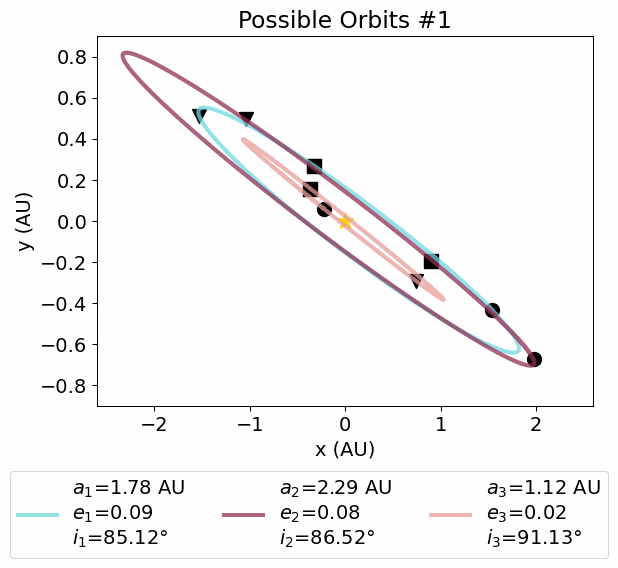
Photometry for Exoplanet Detection Deconfusion
Future direct imaging missions will have instrumentation capable of directly imaging Earth-like exoplanets
in reflected light. Previous work (e.g., Pogorelyuk et al. 2022) predicted that we will encounter a "confusion"
problem when directly imaging multi-planet systems and it is not clear which detection belongs to which planet.
The "deconfuser"
tool was developed to address the planet-detection confusion problem and fit orbits to detections
of planets.
My work has focused on augmenting the deconfuser with exoplanet phase and color information to account for the
brightness variation that a planet exhibits throughout its orbit. I developed a photometry model to couple with the deconfuser,
which calculates the expected brightness for a planet at any given time of observation. I developed an updated orbit-ranking metric
to improve deconfusion for systems if they have a more statistically likely phase or brightness result. My work emphasizes
the necessity for including photometric information in orbit fits and suggests that photometry will be useful for decreasing
planet-detection confusion.
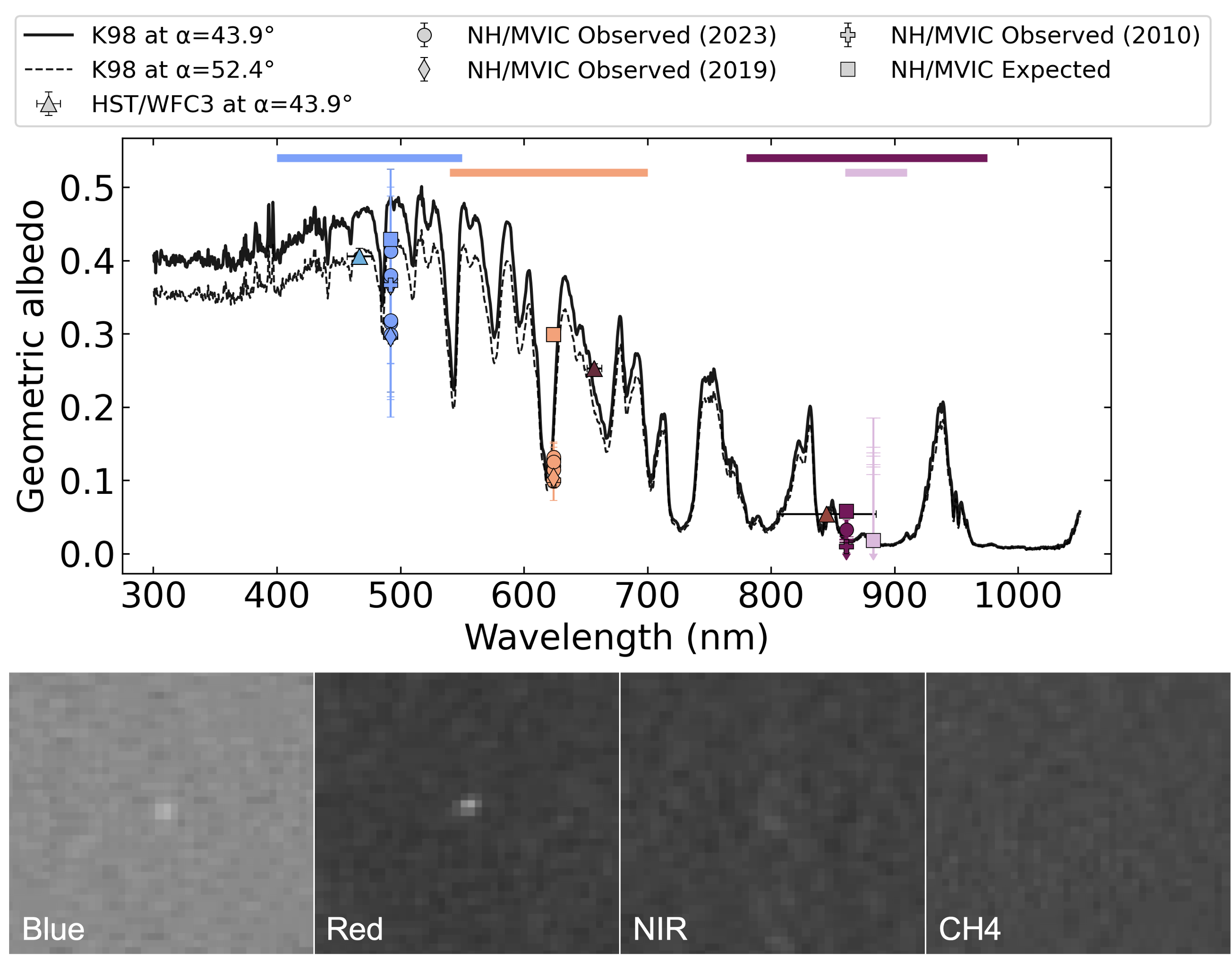
Ice Giants at High Phase Angles
The only measurements of the heat balance of Uranus and Neptune came from Voyager 2 flyby data in 1986 and 1989, respectively.
These observations left major questions about why each of the planets is so different despite their similar bulk composition and size.
On top of the limited understsanding we have of the Solar System ice giants, we now know that ice giant sized planets are among the most common planets in the galaxy.
Future observatories will enable direct imaging of planets in reflected light and characterization of their atmospheres.
However, the viewing geometries accessible to us will only include partial phase angles.
It is therefore critical that we understand the atmospheres and time variability of the Solar System planets at partial phase to fully understand the data collected by these future observatories.
The New Horizons Multispectral Visible Imaging Camera (MVIC) imaged the Solar System ice giants at high phase angles in 2023, 2019, and 2010.
These observations provide new and complementary data with a different set of wavelengths, from a better-calibrated instrument, and during a different season compared to the Voyager observations.
I led the analysis of this data, and the results suggest that Uranus at high phase angle is darker than predicted by a Lambertian phase curve.
This work has implications for informing exoplanet models and interpretation of future observations with missions like the Habitable Worlds Observatory.
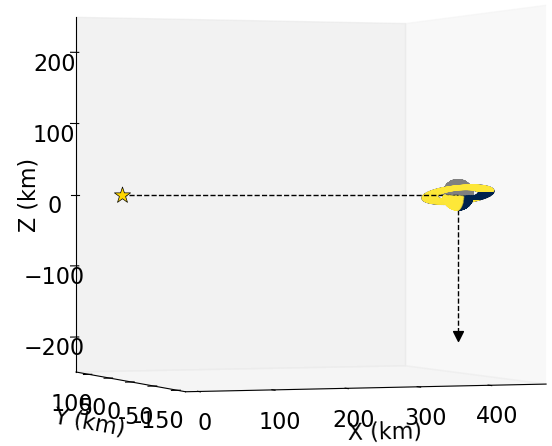
Ringed Exoplanets with the Roman Coronagraph
In recent years, transit surveys and direct imaging campaigns from ground- and space-based observatories have revealed exciting
exoplanet phenomena, including a potential ring system in a transit light curve around J1407b (Kenworthy & Mamajek 2015;
Kenworthy et al. 2015),
a detected circumplanetary disk structure around PDS 70c
(Isella et al. 201; Benisty et al. 2021), and observations of low-density exoplanets
which could be explained by the presence of ring systems (e.g., Piro & Vissapragada 2020).
In the future, direct imaging missions will continue to paint a more comprehensive picture of the exoplanet population as
we reach toward imaging cooler, more mature planets in reflected light.
This study is motivated by the potential unknowns that may be uncovered by the Roman Coronagraph Instrument, slated to launch by May 2027.
Roman will enable the first detection of a mature exoplanet in reflected light, and it is possible that these planets could have ring systems.
How large would a ring need to be to be detectable with Roman? What observing strategies would maximize our chances of detecting and characterizing rings?
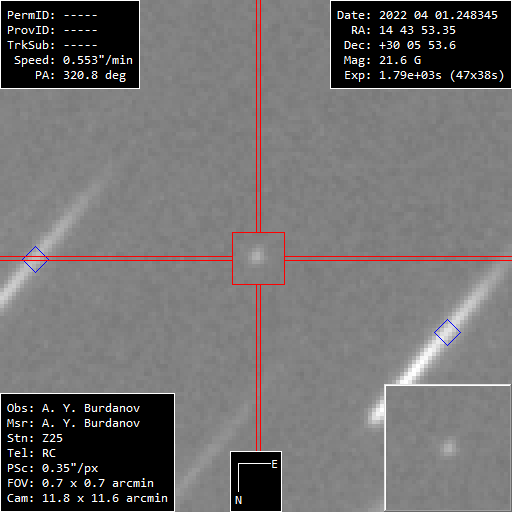
Serendipitous Asteroid Recovery
Many astronomical observations contain serendipitous detections of minor Solar System bodies.
Using techniques like synthetic tracking ,
we can recover observations of the faintest objects that cross the field of view, measure their light curves, and improve knowledge of
their orbits.
These objects provide a unique opportunity to understand the formation and evolution of the early Solar System.
We developed a pipeline to identify and recover chance detections of asteroids in time-series photometric data from the
SPECULOOS and
ASTEP surveys using the publicly-available
synthetic tracking software, Tycho Tracker.
These methods were also extended to JWST observations and resulted in the
first observations of decameter-sized main-belt asteroids.
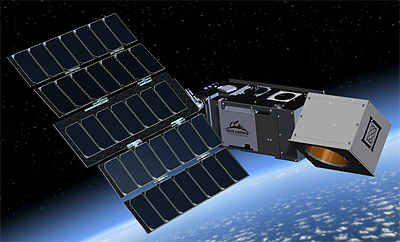
Other Work: Data Validation for the NASA TROPICS Mission
The NASA TROPICS (Time-Resolved Observations of Precipitation structure and storm Intensity with a Constellation of Smallsats)
Mission is a mission designed to provide rapid-refresh microwave measurements of the Earth's troposphere with a constellation of
small satellites. The goal of the mission is to provide nearly all-weather observations of the atmosphere at high
temporal resolution to monitor the rapidly-evolving features of tropical cyclones.
During my time at MIT, I supported the calibration and validation process of the on-orbit data collected by the Pathfinder satellite.
I worked on a team in STAR Lab to develop a validation process using ERA5 reanalysis data,
the CRTM
radiative transfer model, and GOES-16 & -17
cloud maps to determine the accuracy of Pathfinder's observations.
Our methods could also be applied to the full satellite constellation.
For more about the TROPICS mission, see here.